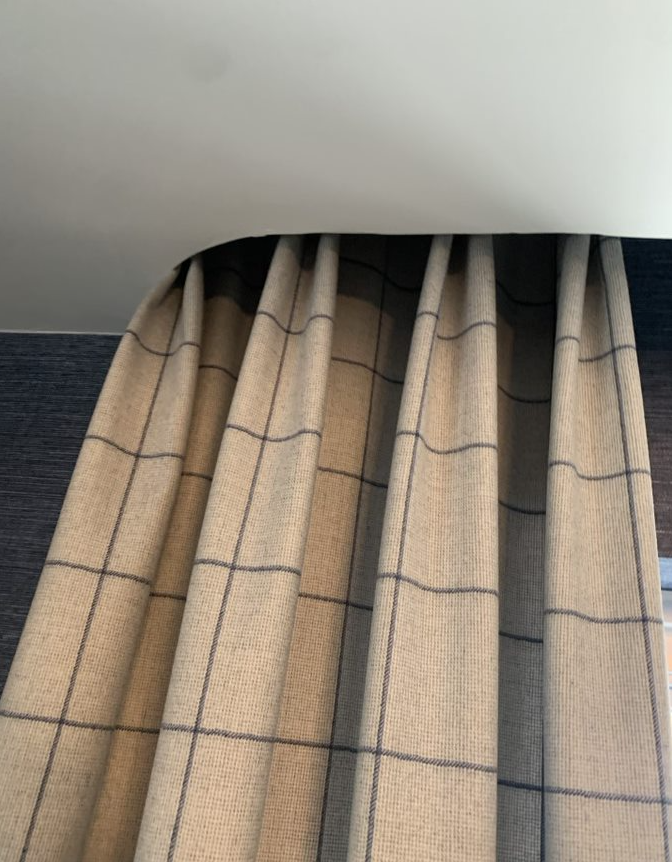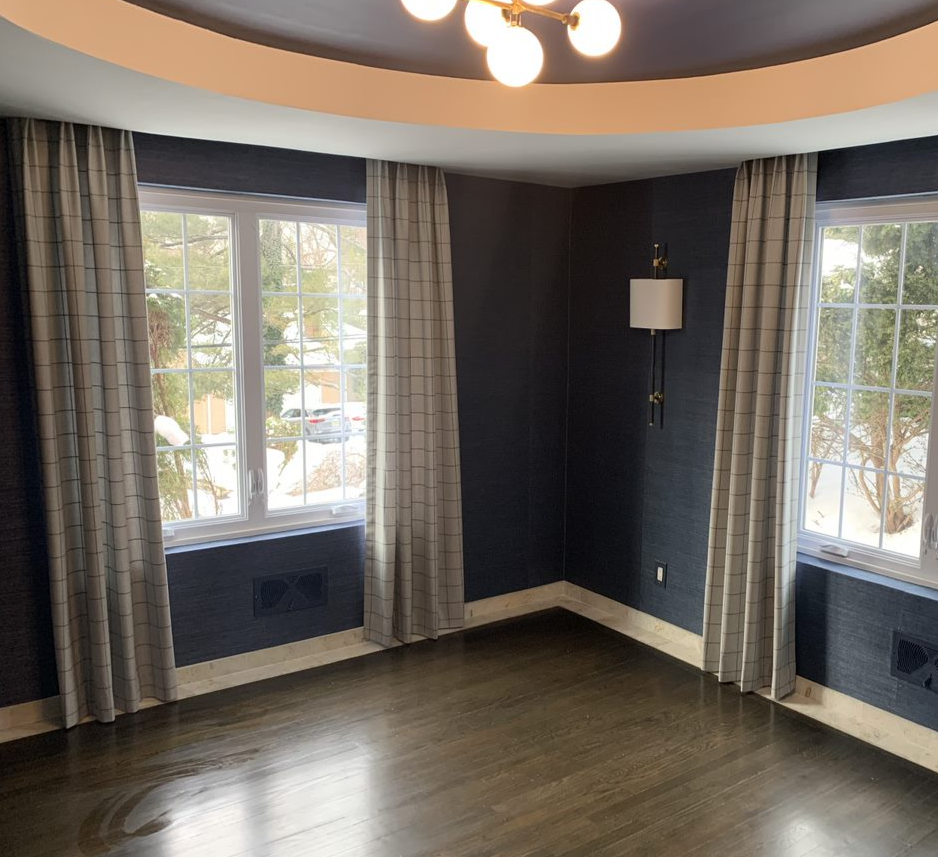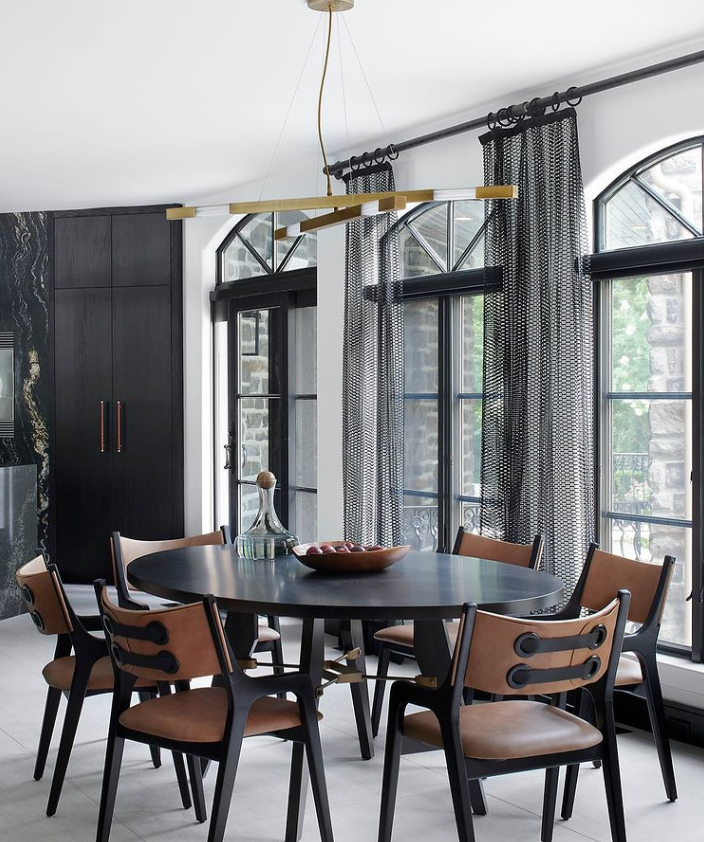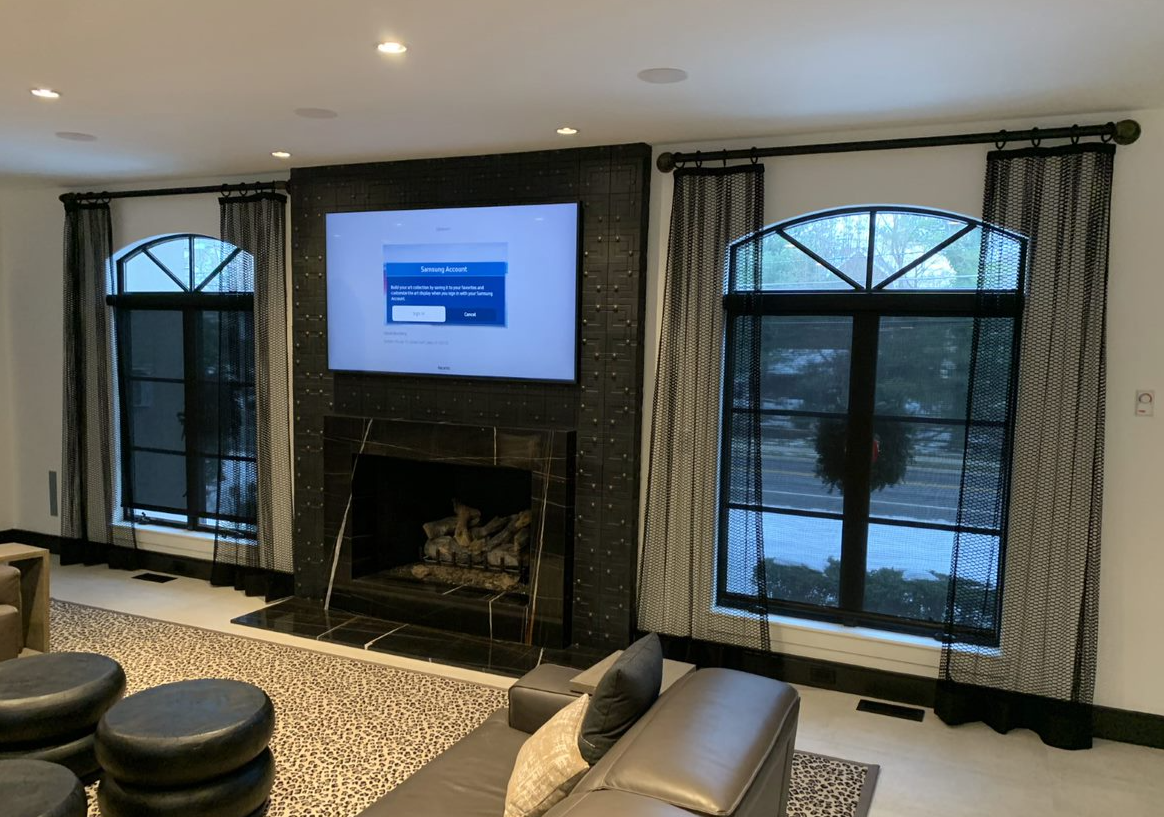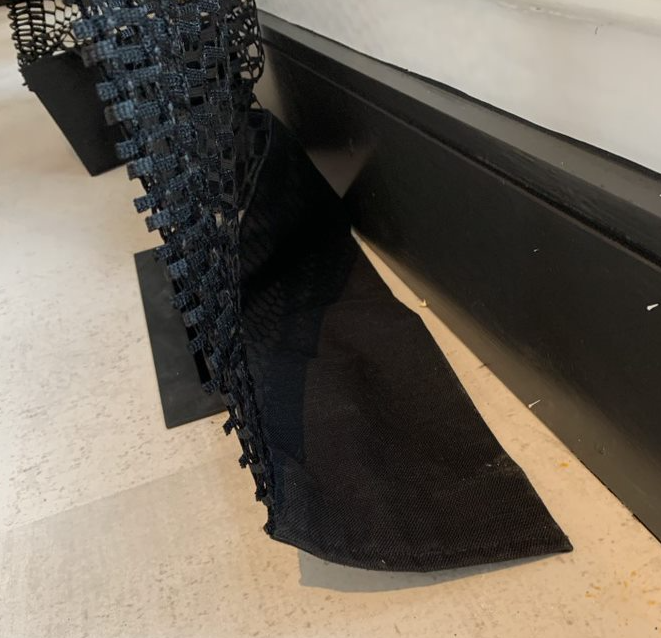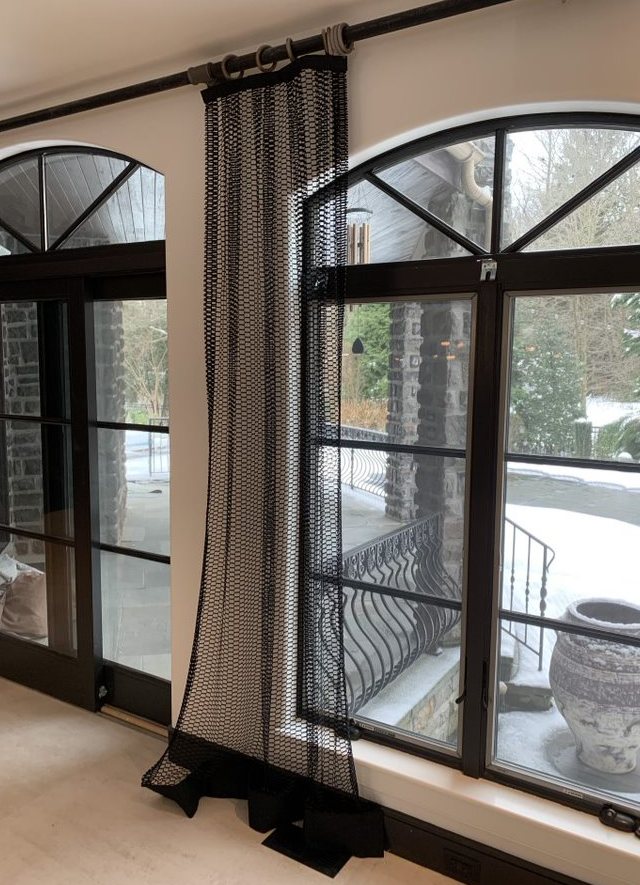Three Tips For Working With Challenging Fabrics
Sometimes those pretty fabrics don't always behave the way we want them to, so it's good to have an idea ahead of time what to watch out for.
Challenging Fabric #1: Wool
100% wool drapery panels for Michael Preston Interiors
Because these panels were 100% wool, we knew that we needed to allow for growth when fabricating and installing.
It’s just something you have to take into consideration before you end up with drapery panels that are dragging on the floor rather than skimming the surface.
Wool is also more susceptible to sun damage, so lining them is essential.
Sturdy and durable, wool and wool blends offer good resistance to pilling, fading, wrinkling, and general soil. Wool is often blended with a synthetic fiber to reduce the possibility of felting the fibers.
Challenging Fabric #2: Linen
100% linen drapery panels for the talented Barbara Straub Interiors


